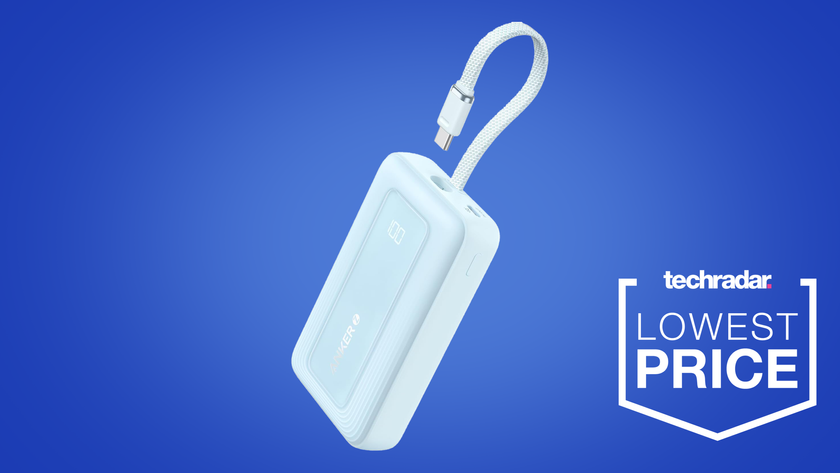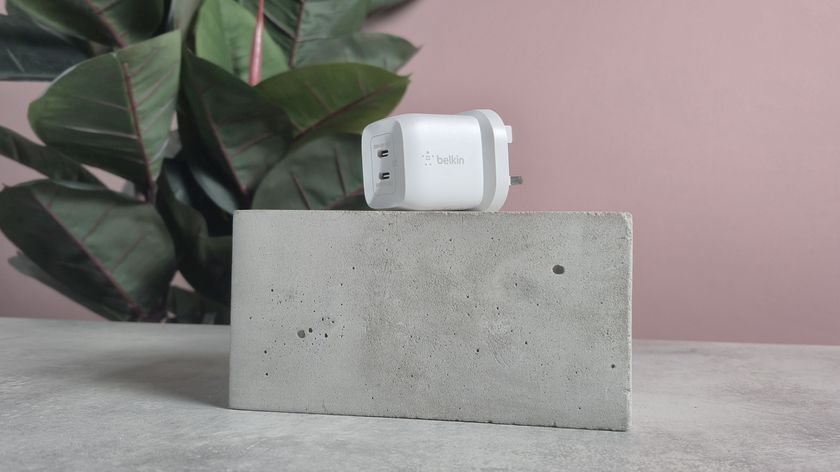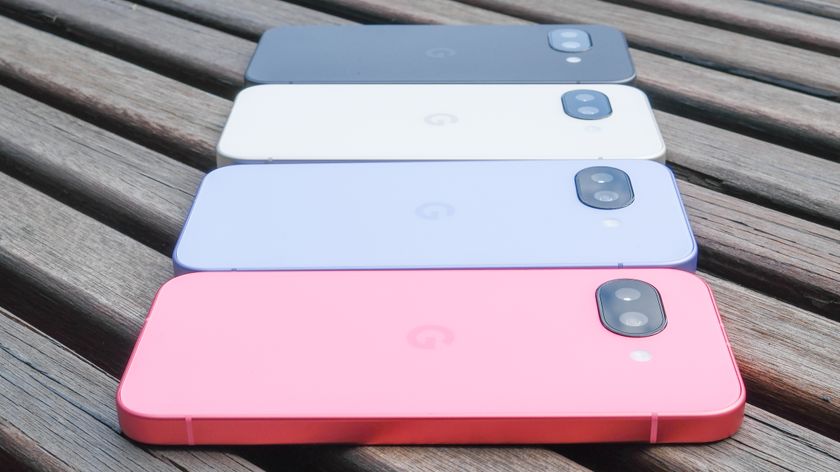Can the Queen get 4G?
We trek around London testing the new networks' 4G services
St Albans station was apparently covered with good outdoor 4G signal according to the coverage maps, but only EE managed to get such a thing while waiting for the train, with many other commuters playing with their smartphones at the same time (although few were likely running 4G speeds).
Sadly, Vodafone didn't even manage to connect to the Speedtest.net app, despite multiple attempts, so scored nil points in this test. Three was once again a creditable distance behind the 4G rivals.
- EE – 4pts
- O2 – 3
- Three – 2
- Vodafone - 0
St Pancras – 08.25
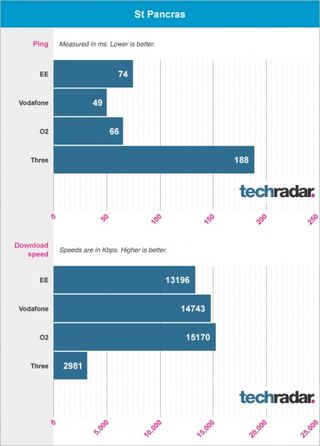
Now we hit the big leagues – outside one of the busiest stations in London at rush hour. With all networks promising good indoor and outdoor coverage, which would leap to the top of the leaderboard?
Vodafone and O2 were the front runners in this test, with EE a close third and Three some way behind. The latency was a little slower than expected, but it seems the congestion from thousands of phones emerging blinking into signal all at once wasn't helping things.
Fresh from its previous two disasters, Vodafone narrowly missed out on top spot – another excellent showing from the new boy O2.
- O2 – 4pts
- Vodafone – 3
- EE – 2
- Three - 1
South Kensington – 10.25
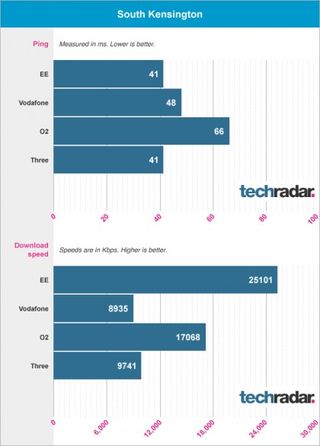
So to quieter locations: in a more affluent area of London, would 4G speeds be slower?
It seems not, as all four networks raised their game in this location. EE really began to flex its muscle in this more open space, while O2 kicked it up a gear once more. Three suddenly remembered that it could pump some pretty whizzy speeds over HSPA+, and even managed to beat the 4G-connected Vodafone into fourth place.
Get daily insight, inspiration and deals in your inbox
Sign up for breaking news, reviews, opinion, top tech deals, and more.
- EE – 4pts
- O2 – 3
- Three – 2
- Vodafone - 1
Buckingham Palace – 10.55
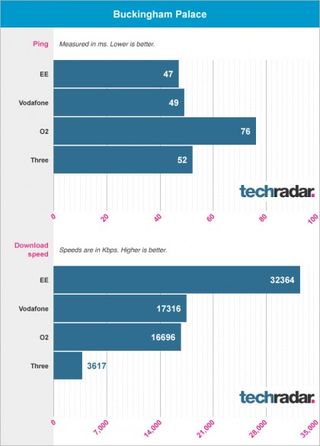
For our final test, we wanted to ask the question everyone has been dying to know since the launch of the 4G networks: can the Queen get a 4G signal in Buckingham Palace?
With 4G signals promised once more – and this time delivered promptly and powerfully – this was going to be the test that sorted the 4G men from the GPRS boys.
Three bowed out early on, with a meagre result given its fine showing in Kensington. However, with many tourists thronging around and a number of businesses close by, its 3G networks may have been taxed rather heavily, while its unlikely foreign visitors would be paying up for 4G signal.
Vodafone managed to finally get another one over on its launch rival, boasting speeds just faster than O2, which will please some lovers of the Big Red Network.
However, EE showed that it knows what it's doing with 4G, bringing nearly double the download speed with the lowest ping rate. So if you can't decide whether you want to download an HD movie or watch guards changing at the Queen's London digs, then it looks like EE may be your best bet.
- EE – 4 pts
- Vodafone – 3
- O2 – 2
- Three - 1
The results
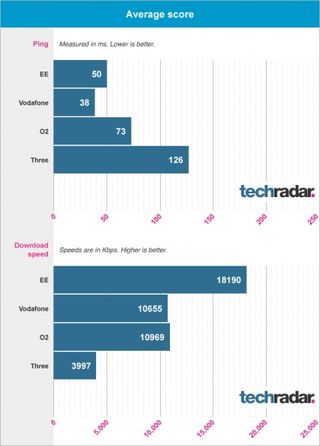
There's no doubt there's a large gap between Three's 3G Ultrafast network and the next generation speeds on offer. However, there were times when the distance was narrower, so if you're able to hold on until December with speeds hovering around 4-5Mbps on average, then you might just be in for a 4G treat.
EE has definitely got the most robust network on offer, with the fastest speeds shown in most locations, and more often than not far exceeding the competition.
O2, with less spectrum on offer than its rivals, surprised us in this test by often providing fast and impressive results – however, with a high price plan it will be interesting to see if consumers pay up.
Vodafone looks like it needs to do some more work, but with the red network promising to turn on a mast every 30 minutes in London, perhaps it won't be too long before its coverage map actually mimics real life usage.
We'll be running the same tests again in two weeks' time to see if anything has improved, so stay tuned to see if EE can hold on to its impressive lead.
- Want to know if you should really care about 4G? Well, luckily we've spent ages putting together everything you need to know.

Gareth has been part of the consumer technology world in a career spanning three decades. He started life as a staff writer on the fledgling TechRadar, and has grew with the site (primarily as phones, tablets and wearables editor) until becoming Global Editor in Chief in 2018. Gareth has written over 4,000 articles for TechRadar, has contributed expert insight to a number of other publications, chaired panels on zeitgeist technologies, presented at the Gadget Show Live as well as representing the brand on TV and radio for multiple channels including Sky, BBC, ITV and Al-Jazeera. Passionate about fitness, he can bore anyone rigid about stress management, sleep tracking, heart rate variance as well as bemoaning something about the latest iPhone, Galaxy or OLED TV.
